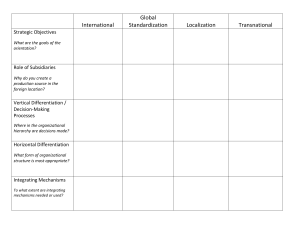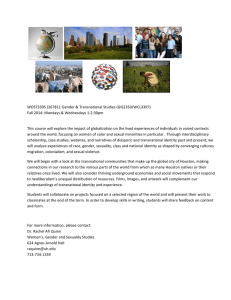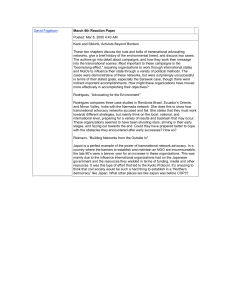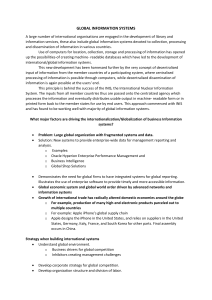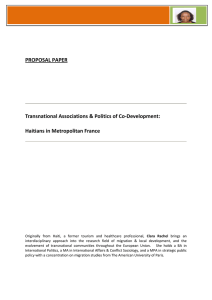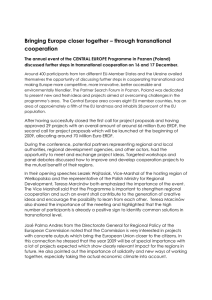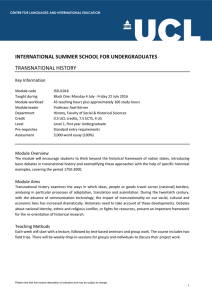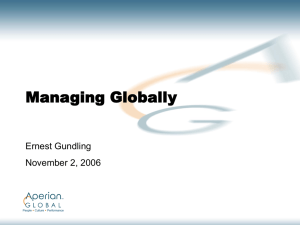Managing Global System
advertisement
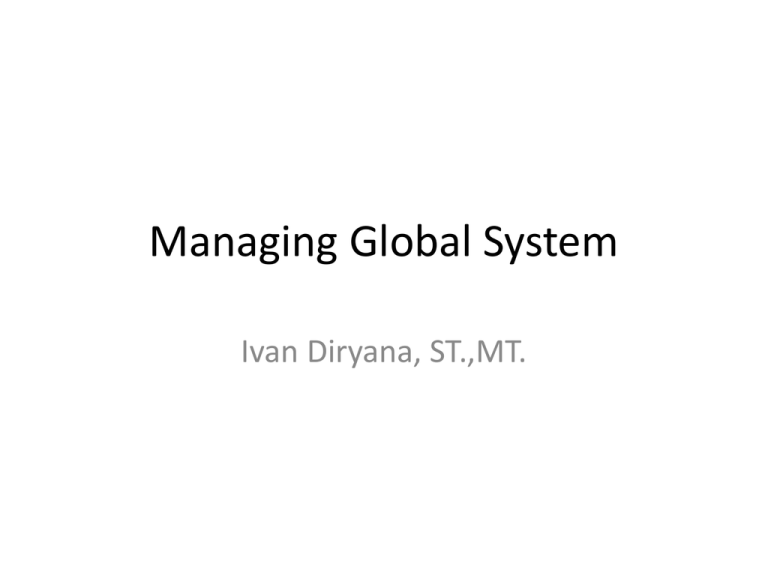
Managing Global System Ivan Diryana, ST.,MT. THE GROWTH OF INTERNATIONAL INFORMATION SYSTEMS • AN HP LAPTOP’S PATH TO MARKET DEVELOPING AN INTERNATIONAL INFORMATION SYSTEMS ARCHITECTURE THE GLOBAL ENVIRONMENT: BUSINESS DRIVERS AND CHALLENGES ORGANIZING INTERNATIONAL INFORMATION SYSTEMS • GLOBAL STRATEGIES AND BUSINESS ORGANIZATION – Domestic exporter strategy is characterized by heavy centralization of corporate activities in the home country of origin. – multinational strategy concentrates financial management and control out of a central home base while decentralizing production, sales, and marketing operations to units in other countries. – Franchisers are an interesting mix of old and new. On the one hand, the product is created, designed, financed, and initially produced in the home country, but for product-specific reasons must rely heavily on foreign personnel for further production, marketing, and human resources. – transnational strategy, nearly all the value-adding activities are managed from a global perspective without reference to national borders, optimizing sources of supply and demand wherever they appear, and taking advantage of any local competitive advantages. GLOBAL SYSTEMS TO FIT THE STRATEGY MANAGING GLOBAL SYSTEMS GLOBAL SYSTEMS STRATEGY Define the Core Business Processes • The way to identify these core business processes is to conduct a business process analysis. How are customer orders taken, what happens to them once they are taken, who fills the orders, how are they shipped to the customers? What about suppliers? Do they have access to manufacturing resource planning systems so that supply is automatic? • When you understand the business processes of a firm, you can rank-order them. You then can decide which processes should be core applications, centrally coordinated, designed, and implemented around the globe, and which should be regional and local. • Identify the Core Systems to Coordinate Centrally By identifying the critical core business processes, you begin to see opportunities for transnational systems. The second strategic step is to conquer the core systems and define these systems as truly transnational. • Choose an Approach: Incremental, Grand Design, Evolutionary • Make the Benefits Clear THE MANAGEMENT SOLUTION: IMPLEMENTATION • Agreeing on Common User Requirements – Establishing a short list of the core business processes and core support systems will begin a process of rational comparison across the many divisions of the company, develop a common language for discussing the business, and naturally lead to an understanding of common elements • Introducing Changes in Business Processes – Your success as a change agent will depend on your legitimacy, your authority, and your ability to involve users in the change design process. Legitimacy is defined as the extent to which your authority is accepted on grounds of competence, vision, or other qualities. • Coordinating Applications Development – Choice of change strategy is critical for this problem. At the global level there is far too much complexity to attempt a grand design strategy of change. It is far easier to coordinate change by making small incremental steps toward a larger vision. • Coordinating Software Releases – Firms can institute procedures to ensure that all operating units convert to new software updates at the same time so that everyone’s software is compatible. • Encouraging Local Users to Support Global Systems – The key to this problem is to involve users in the creation of the design without giving up control over the development of the project to parochial interests. The overall tactic for dealing with resistant local units in a transnational company is cooptation. TECHNOLOGY ISSUES AND OPPORTUNITIES FOR GLOBAL VALUE CHAINS • One major challenge is finding some way to standardize a global computing platform when there is so much variation from operating unit to operating unit and from country to country. • Finding specific software applications that are user friendly and that truly enhance the productivity of international work teams. COMPUTING PLATFORMS AND SYSTEMS INTEGRATION • Just imagine the challenge of integrating systems based on the Windows, Linux, Unix, or proprietary operating systems running on IBM, Sun, HP, and other hardware in many different operating units in many different countries • CONNECTIVITY • SOFTWARE LOCALIZATION • English may be the assumed international standard. But as international systems penetrate deeper into management and clerical groups, a common language may not be assumed and human interfaces must be built to accommodate different languages and even conventions. The entire process of converting software to operate in a second language is called software localization.
